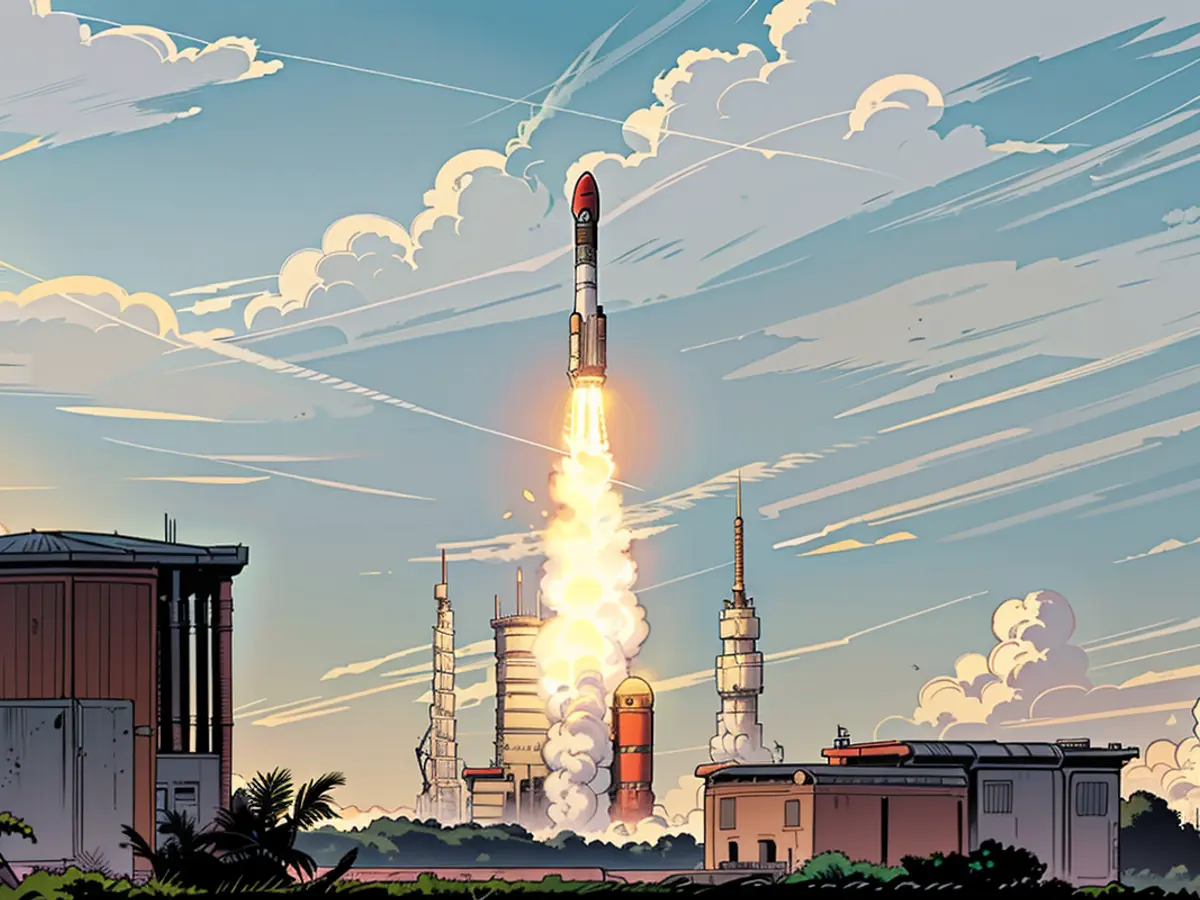Europe's new Ariane 6 launcher successfully launches into space
The rocket is intended to promote satellites into space for commercial and public contractors in the future. Its first launch, which had to be delayed by an hour on the ground due to a "small problem," saw the new carrier rocket carry around 20 "passengers": microsatellites from universities and scientific experiments, including some from Germany.
According to the European Space Agency (ESA), the microsatellites were successfully deployed into orbit an hour and six minutes after takeoff. ESA head Josef Aschbacher spoke of a "historic day for the ESA and for Europe."
There was also joy over the successful launch in Berlin with the coordinator of the German government for aerospace. The launch was described as "a strong sign for a sovereign and innovative Europe," she declared. She also spoke of an "incredibly important and essential milestone for the future development of European space travel."
Walther Pelzer, a member of the board of the German Aerospace Center, also spoke of a great success. The head of the US space agency NASA, Bill Nelson, wrote in an online service X of a "giant leap forward" for the ESA.
The predecessor model Ariane-5 had been in use for 27 years before its last launch in the previous year. Since then, Europeans have had no independent means of launching satellites into orbit: since Russia's invasion of Ukraine, they have had no access to the Russian carrier rocket Soyuz, which had been launched from French Guiana for ten years. The delay of the originally planned maiden flight of Ariane-6 worsened the crisis.
The Ariane-6 project was decided upon in 2014 and cost 4.5 billion Euros. Germany is the second largest contributor to the Ariane-6 program of the ESA after France.
Ariane-6 will bring satellites into a few hundred kilometers of altitude, but also into a geostationary orbit in 36,000 kilometers altitude. At this altitude, the satellite's speed matches the Earth's rotation, so observers on the ground have the impression that the satellite is not moving. The Vinci engine of the rocket can be repeatedly ignited to launch multiple satellites at different points in space.
The first commercial flight of Ariane-6 is planned for the end of the year, with 14 more in the following two years planned. In the first phase, nine flights per year are planned. Ariane is thus far from the US company SpaceX, which dominates the competition and had 14 launches of the Falcon 9 rocket in May alone.
The space industry is booming. According to the consulting firm Novaspace, 822 billion Dollars (767 billion Euros) will be spent on launchers, satellites, and other parts of the space industry by 2032. In the previous year, it was still 508 billion Dollars.
However, the growing demand does not reach far enough to make Ariane-6 profitable. Only the first 15 flights are currently financed. The 22 ESA member states declared themselves ready to contribute up to 340 million Euros annually to secure the 16th to 42nd flight of Ariane-6 – in exchange for an eleven percent price reduction from the industry.
Ariane-6 already has 30 orders, with 18 from Amazon to launch satellites for its Kuiper project for satellite-based internet connections into space.
- The Federal Government of Germany was joyful about the successful launch, as it highlighted a "strong sign for a sovereign and innovative Europe."
- The German Aerospace Center (DLR) was represented by Walther Pelzer, who also celebrated the launch as a great success.
- The Ariane-6 project is a collaborative effort between ESA member states, with Germany being the second largest contributor after France.
- The new carrier rocket, Ariane-6, was developed by the European Space Agency (ESA) and was launched from the Guiana Space Center in Kourou, French Guiana.
- The first launch of Ariane-6 was originally planned, but was delayed due to a minor issue, causing a one-hour hold before takeoff.
- The successful deployment of the microsatellites into orbit was praised by ESA head Josef Aschbacher, calling it a "historic day for the ESA and for Europe."
- The Ariane-6, designed to promote commercial and public contractors' satellites into space, will have its first commercial flight at the end of the year, thanks to the support of the German and European governments.







